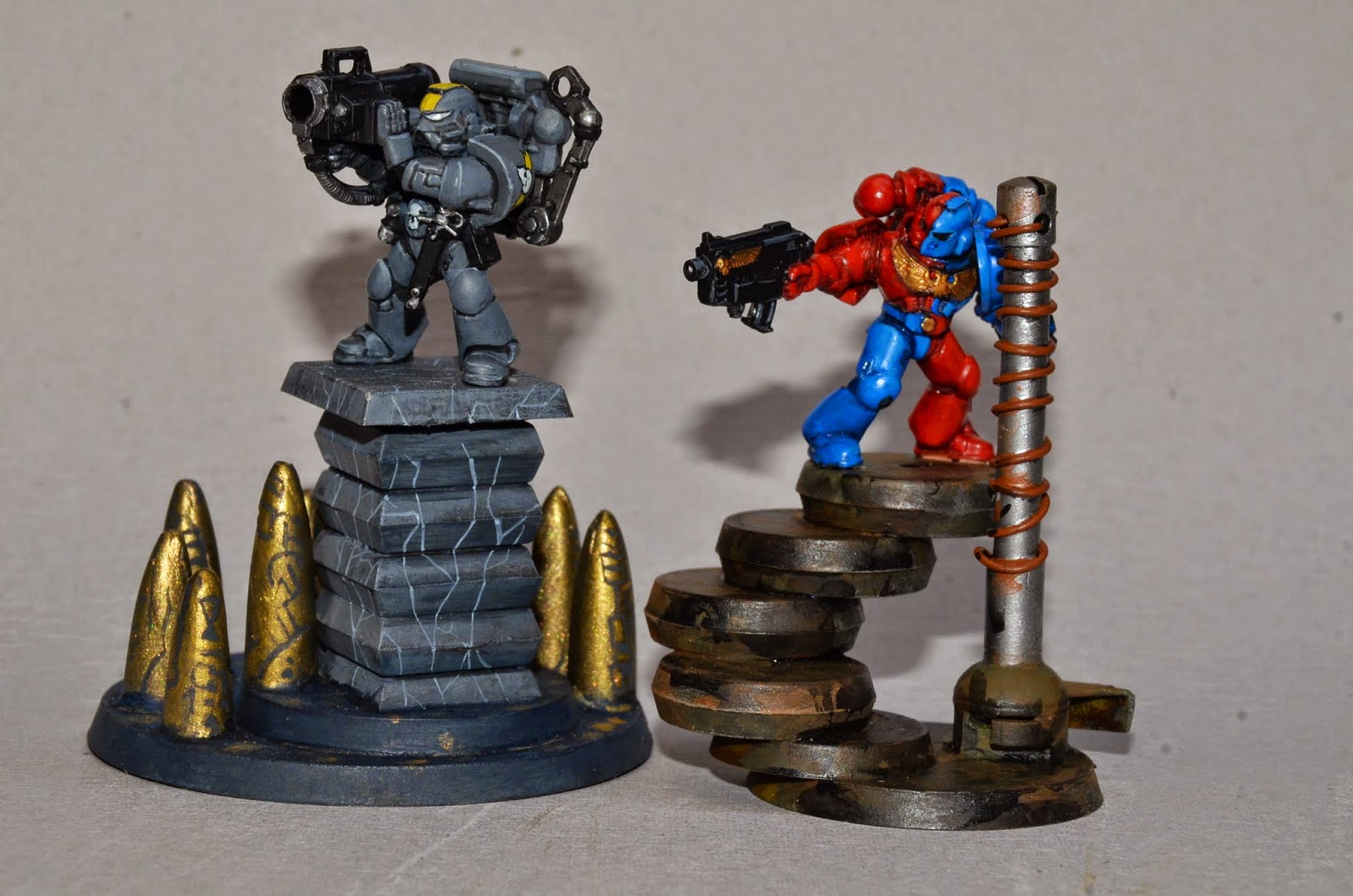This is Games Workshop's Arachnarock, a giant spider which can be summoned by Goblin shamen using the appropriate bait (probably something involving blood & guts.) I have assembled it here and filled any obvious seams, but it is an impressive moulding which didn't require a lot of effort. I did add some micro balloons as a bit of detailing on the underside and on top of the last leg joints .These were sprinkled onto patches of super glue applied to specific areas with a toothpick.
The model was then undercoated in flat black (from the local h'ware). I said it was impressive and red goes so well with black don't you think? What a monster!
My basic idea is that the goblins are in the act of the Summoning at the bottom of the spider's rocky cliff home, so I need a cliff slope and an area for the goblins and their bait. This overall structure is made from 3mm styrene plastic , also called plasticard-- I will refer to it in future as styrene (as opposed to polystyrene, the soft white packing material which is also used in this build). The dimensions are - length
280mm, height 290mm, width 130mm. The overall look of this diorama will be different in that it is tall and thin, not a single level as many dio's are.
Apart from the shell of styrene, the main structure is this plywood spine covered with chunks of polystyrene, which makes the actual cliff slope. This will be coated thickly in casting plaster and the rock detail carved into it. The brace at the back is shaped balsa, necessary to maintain the angle.
When pouring plaster, some type of form is usually necessary so that the final shape is basically what you need when the detail work has to be done. My pouring base was a strange, bent shape and so the box form I had to build using sheet styrene was a bit of a problem, in that it needed to be water-tight , balanced and strong enough to withstand quite a weight of wet plaster.
Ready to pour! The sausages of Klean Klay( adult plasticene) are visible at all the corners and are used underneath to thoroughly seal the form before pouring the plaster. Note the arrangement of the side pieces, in that they are placed in a rotational manner. This method allows any flat sided form to be boxed with as little precise measurement as possible. The p'styrene chunks are glued with white glue and when doubled, are pinned with toothpicks- the dots visible.
The end result of the pour-a great hunk of very rapidly going off plaster. I try to work as quickly as possible on the block in its "green state", while it is still soft. Casting plaster is much harder than Plaster of Paris and therefore much more robust, but you really have to work it quickly if you don't want to do all the details with a motor-tool. You can see the beginnings of my rock wall even at this early stage.
My idea for the rocks was that they would be sedimentary or at least have some unifying characteristics, so I scribed a horizontal linear pattern across the cliff face. Initially I used a hand tool with a curved hook at one end and a diamond shaped point at the other but the plaster beat me to it and I had to resort to my motor tool with a fine carving bit. Our climate in January says "plaster will go off fast" so I am prepared to go mechanical.

Here is the final rock face with a bed of Celluclay ( a very good instant papier mache) making the lower flat area where the goblins will be placed. The surface, being adhesive when wet ,was then sprinkled with various coarse sands , railway ballast and some rock-like pebbles placed in position. The sides of the dio needed some refining and this was done with more Celluclay while some extra plaster was mixed to round out the top. Overall I am happy with the result so far, but there will be some shrinkage of the Celluclay, which although a great product, takes an awfully long time to dry, especially in our current weather, wet every second day.

There we have it. The Arachnarock is descending the cliff -with the help of a bit of fishing line attached to her nether regions. Oh yes, it would probably be a lady monster (ala Shelob), and I don't think she'll be too pleased to haul her vastness down the cliff for some standard goblin rubbish. Let's hope the next part of this build will provide her with something yummy!


















































